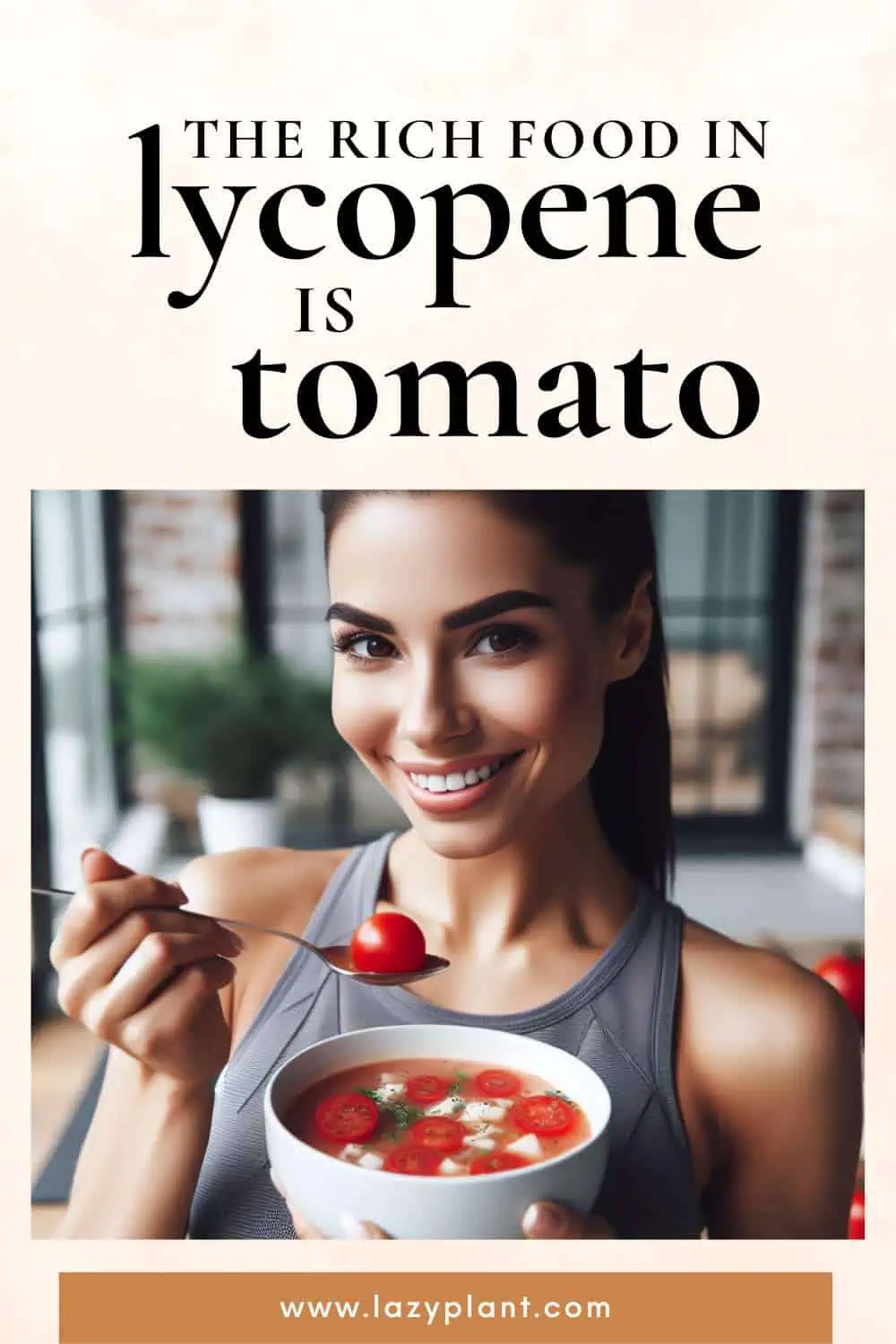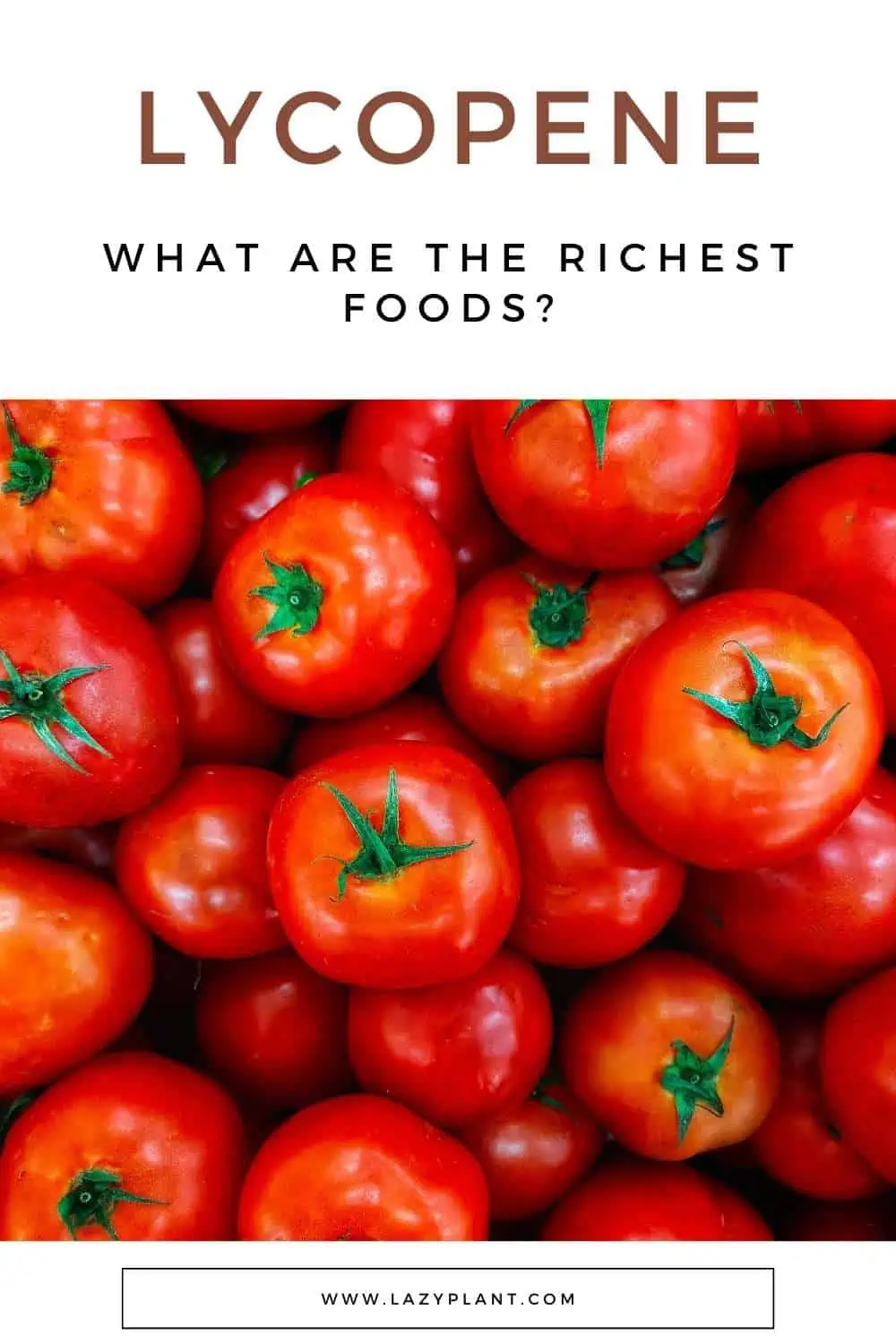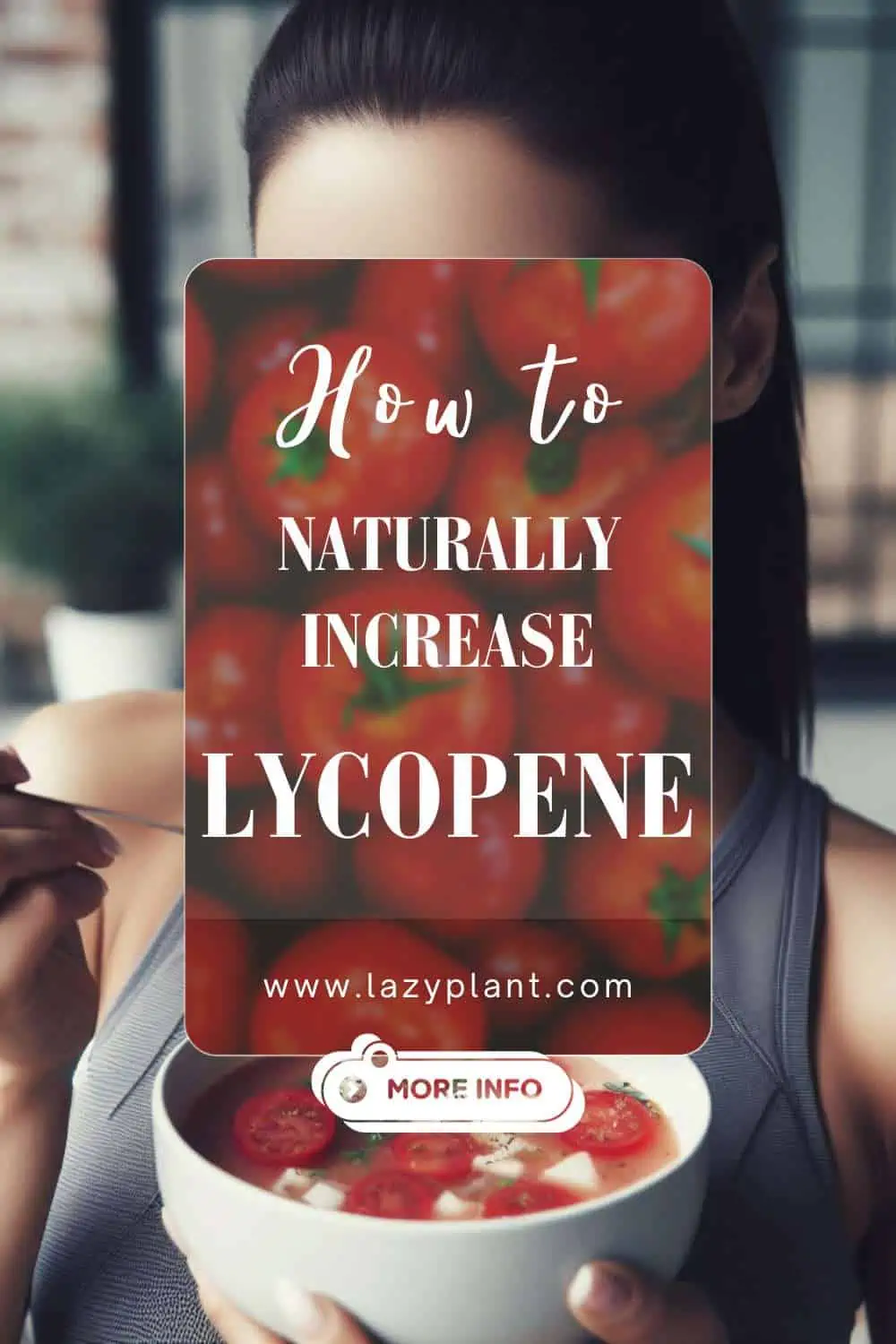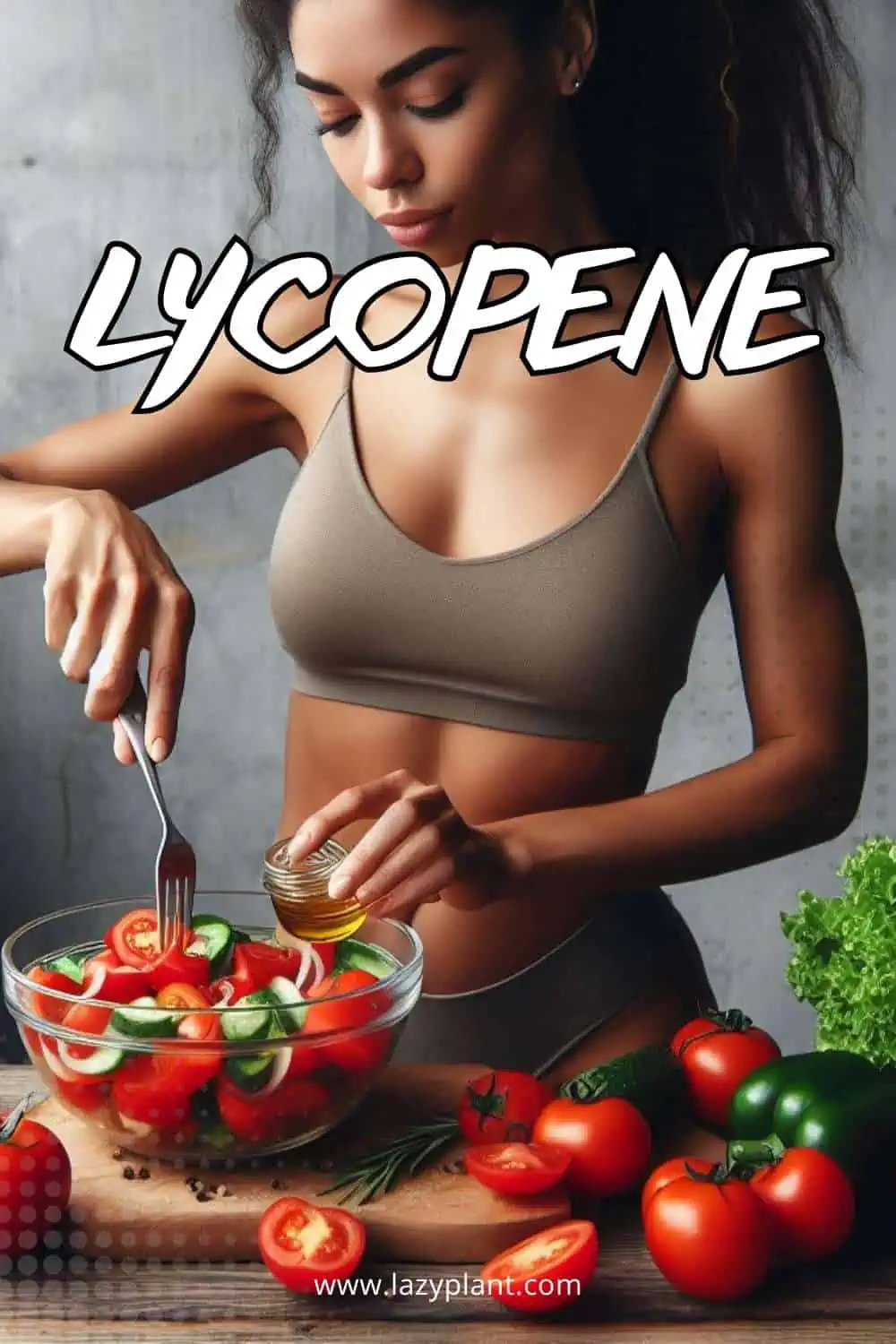Tomato is one of the best dietary sources of lycopene. All tomato products are rich in lycopene as it isn’t vulnerable to heat or cooking, with sun-dried tomatoes being the richest food in lycopene, with 46 mg per 100g. A small serving provides more lycopene than the daily value!
Why is lycopene good for you?
Lycopene is a carotenoid and one of the most powerful antioxidants. It’s twice more powerful than beta-carotene and 10 times more powerful than alpha-tocopherol. Moreover, lycopene is the most predominant carotenoid in the blood.
Most noteworthy, lycopene has been linked to a decreased risk of chronic diseases, such as cancer and cardiovascular disease. Also, lycopene is good for:[1]
- eyesight. Researchers found that lycopene can protect your eyesight. Lycopene helped in therapy against cataracts.[2]
- bones. Lycopene is good for bone health. It can even restore bone strength.[3]
- Alzheimer’s disease. Lycopene may delay the development of Alzheimer’s disease.[4]
How much lycopene do we need a day?
There isn’t an official recommended daily intake for lycopene. However, many studies have reported great health benefits for a daily lycopene intake of 15-30 mg.
Most people don’t consume more than 10 mg of lycopene per day, though. That’s why eating more foods rich in lycopene is important.
Foods high in lycopene
Only a few foods contain high amounts of lycopene with sun-fried tomatoes being the richest natural source of lycopene.
Guava (about 5.2 mg per 100g), pink grapefruit (about 2.3 mg), watermelon (about 4.5 mg), and papaya (about 0.18 mg) are also excellent sources.
It’s also found in smaller amounts in other red or pink fruits and vegetables. For instance, red bell peppers have approximately 0.12 mg, mango 0.008 mg, spinach 0.003 mg, and carrots 0.003 mg of lycopene per 100g.

These values are estimates and can vary.
Practically, most people depend on tomato products year-round for lycopene!
How much lycopene in a tomato?
Tomato contains 2.6 mg of lycopene per 100g. Moreover, the lycopene content of a:
- small tomato (2-2/5″) is 2.3 mg,
- medium tomato (2-3/5″) is 3.2 mg,
- large tomato (3″) is 4.7 mg,
- cup of chopped tomatoes is 4.6 mg.
In contrast, green, yellow, and orange tomato varieties are poor sources of lycopene.
Lycopene in tomato juice, paste, soup, sauce & ketchup
Lycopene isn’t vulnerable to heat. So, it isn’t destroyed during food processing. Hence, all processed tomato products, including tomato juice, paste, soup, sauce, and ketchup contain high amounts of lycopene.[5]
In fact, the main dietary sources of lycopene in the standard Western diet are tomato products:
- tomato juice has 9 mg of lycopene per 100g
- ketchup has 14.2 mg
- tomato paste has 7.5 mg
- sun-dried tomatoes have 46 mg
- tomato soup has 5.5 mg
- tomato sauce has 16 mg
Sun-dried tomatoes are the richest dietary sources of lycopene.
How to increase the bioavailability of lycopene?
Cook tomatoes
Actually, lycopene in processed tomato products is more bioavailable than raw tomatoes. Processing enhances the bioavailability of lycopene!
Moreover, preparing smoothies with lycopene-rich fruits like watermelon or tomatoes can break down cell walls, making lycopene more accessible.
Eat colorful salads & dishes
Additionally, the bioavailability of lycopene is significantly higher when we consume it with foods rich in beta-carotene! Hence, consuming a variety of colorful vegetables alongside lycopene-rich sources like tomato products can improve the overall absorption of carotenoids. Include a mix of red, orange, and green vegetables in your meals.

Red bell peppers contain some lycopene as well. Considered adding them to recipes with tomatoes.
To skyrocket your lycopene intake, include sun-dried tomatoes in salads, pasta dishes, or on pizzas.
Eat tomatoes with healthy fat
Lycopene is fat-soluble. So consuming it with healthy fats can enhance absorption. Consider adding olive oil, avocado, seeds, or nuts to salads, or cooking tomatoes with a small amount of healthy oil.
If considering supplements, take them with a meal containing healthy fats to enhance absorption.
When should I eat tomatoes for better absorption of lycopene?
There isn’t a specific “best” time to eat tomatoes for optimum lycopene absorption.
They can be enjoyed at various times throughout the day based on personal preferences and dietary habits.
However, incorporating tomatoes into meals with some considerations can enhance their nutritional benefits. Including them in main meals, such as lunch or dinner, allows you to pair them with other nutrients and food groups like vegetable oil that can substantially increase lycopene absorption and other fat-soluble nutrients!
Recipe ideas for boosting lycopene intake
Do you want to skyrocket your lycopene status? Here are 11 easy and quick recipes that incorporate tomato products and other lycopene-packed foods:
- Tomato and avocado toast: Spread mashed avocado on whole-grain toast and top with sliced tomatoes, salt, and pepper for a quick and nutritious breakfast or snack.
- Spaghetti with tomato sauce and spinach: Cook whole-grain spaghetti, toss with tomato sauce, and add fresh spinach for a quick and nutritious pasta dish.
- Tomato and red pepper soup: Blend roasted tomatoes, red bell peppers, and vegetable broth for a delicious and warming soup.
- Caprese salad: Layer tomato slices, fresh mozzarella, and basil leaves. Drizzle with balsamic glaze and olive oil for a simple and flavorful salad.
- Tomato and avocado salsa: Combine diced tomatoes, avocados, red onion, cilantro, and lime juice for a refreshing salsa. Serve with whole-grain tortilla chips.

- Stuffed bell peppers: Fill halved bell peppers with a mixture of quinoa, black beans, corn, and diced tomatoes. Bake for a nutritious and easy dinner.
- Tomato and chickpea salad: Combine cherry tomatoes, chickpeas, cucumber, and feta cheese. Toss with olive oil and lemon juice for a quick salad.
- Mango tomato salsa:Dice mangoes, tomatoes, red onion, and cilantro. Add lime juice for a tropical twist to your salsa.
- Grilled tomato and cheese sandwich: Grill whole-grain bread with sliced tomatoes, mozzarella, and fresh basil for a flavorful sandwich.
- Tomato basil bruschetta: Combine diced tomatoes, fresh basil, garlic, and olive oil. Serve on toasted whole-grain baguette slices.
- Pasta primavera with tomato sauce: Cook whole-grain pasta and toss with tomato sauce, sautéed vegetables, and a sprinkle of Parmesan cheese.
Tomato is more than lycopene!
Besides lycopene, tomato has a great nutritional value. First, tomato supports weight loss, as it’s pretty low in calories. Even a large tomato contains no more than 35 calories! Moreover, tomatoes can control appetite and decrease cravings for fattening foods.
Furthermore, tomato is pretty low in sugar. Even people with diabetes and people on keto can consume it.
Last, but not least, raw tomato is an excellent dietary source of vitamin C.
